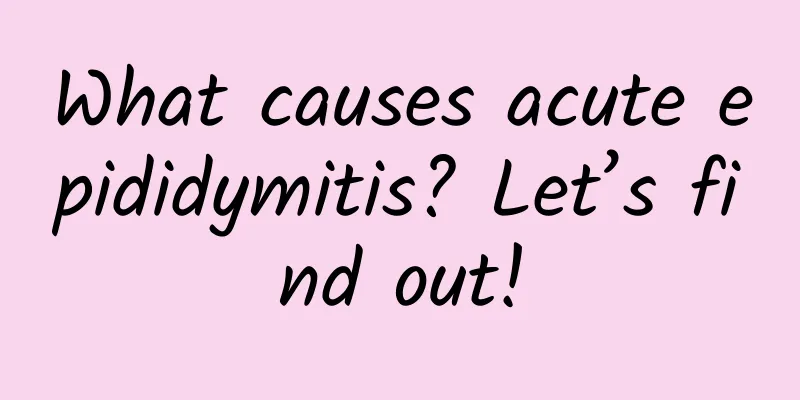How long does it take for a man to ejaculate?

|
For men, sex ends with ejaculation. If you have sex, you know what it feels like. But many people are curious about the signs of men's ejaculation. In fact, ejaculation is just a process in sex, which is mainly controlled by the nervous system. Let's talk about the body's reaction during male ejaculation. Ejaculation, a basic biological term, is the reflex action of male animals to eject semen during sexual intercourse. For humans, ejaculation is a series of coordinated actions of various parts of the reproductive system, and semen is ejected from the penis. It consists of a two-step spinal reflex, the primary of which is centered in the lumbosacral spinal cord, with sensory impulses transmitted by touch receptors in the glans penis. The neurophysiology of ejaculation is only partially understood. Studies have shown that dopaminergic systems promote ejaculation while serotonergic systems inhibit ejaculation. The primary neural mechanism of ejaculation is somatic innervation, but it also involves nerves and fibers from the autonomic nervous system in the vagina. The autonomic branches of the parasympathetic nervous system primarily control erectile function, while the sympathetic and somatic branches primarily control emission and ejaculation. The first step of ejaculation is that the sympathetic nerves send out impulses to cause the smooth muscles of the vas deferens and seminal vesicles to contract, thereby transferring the semen in the vas deferens and seminal vesicles to the urethra; the second step is to use the impulses of the pudendal nerves to contract the transverse muscles at the root of the corpus cavernosum of the penis, thereby ejecting the semen in the urethra. The excitement of the higher parts of the brain also acts on the erection center and ejaculation center of the spinal cord through the descending pathway. Normal human sexual excitement stimulation comes from various senses and affects the spinal reflex activities through the brain. Ejaculation is a complex process that includes erection, ejaculation, ejaculation and orgasm. Erection is due to the swelling and hardening of the penis, and its primary nerve innervation comes from the sacral nerve plexus and the pelvic visceral nerves or erectile nerves. Ejaculation involves collecting semen before ejaculation and transporting it to the prostatic part of the urethra. With the closure of the bladder neck and distal urethral sphincter, the prostatic part of the urethra becomes a reservoir of semen. This will induce ejaculation, that is, the rhythmic ejection of semen through the urethra. The participation of the skeletal muscles of the perineum is essential in this process. Orgasm is a brain-involved, usually pleasurable event and is closely related to ejaculation. The neurophysiology of ejaculation is only partially understood. Research suggests that dopaminergic systems promote ejaculation while serotonergic systems inhibit ejaculation. The primary neural mechanism of ejaculation is somatic innervation, but it also involves nerves and fibers from the autonomic nervous system in the vagina; the autonomic branches of the parasympathetic nervous system primarily control erectile function while the sympathetic and somatic branches primarily control emission and ejaculation. |
<<: Can the lack of sperm be cured?
Recommend
Causes of anal fissure in men
Anal fissures caused by difficulty in defecation ...
What is penis lengthening? Indications for penis lengthening surgery
How long should a man's penis be to be useful...
What are the signs of male infertility?
Fertility is the most important thing in people&#...
15 cancer signs that men may ignore
Introduction: Men are usually careless and not so...
What medicine should I take if I have diarrhea after drinking beer? How to deal with diarrhea after drinking
Beer is the most common alcoholic beverage in dai...
Pain at the base of the genitals
Genital pain is not a rare disease. Whether it is...
How long does it usually take for a man to have a second erection?
Generally, after having sex, a man's penis wi...
The causes of hair loss revealed: Four deadly causes of hair loss
Hair loss refers to the phenomenon of hair fallin...
There is a hard lump on the penis
A hard bump on the penis may be a symptom of glan...
Only by understanding prostatitis can we find the right medicine for the disease.
Now that everyone's living conditions are gra...
How many times a night is normal for a man?
In modern cities, men may sometimes have a lot of...
There are many white spots and blisters in the crown groove. What's going on?
Male genital diseases often cause great distress ...
How to satisfy men's sexual needs
When men and women are together, they should not ...
What kind of exercise can improve sexual performance? These are all good choices!
There are many ways to improve sexual performance...
What is the reason for boys having less hair?
Hair is the hair that grows on the head. Its func...









